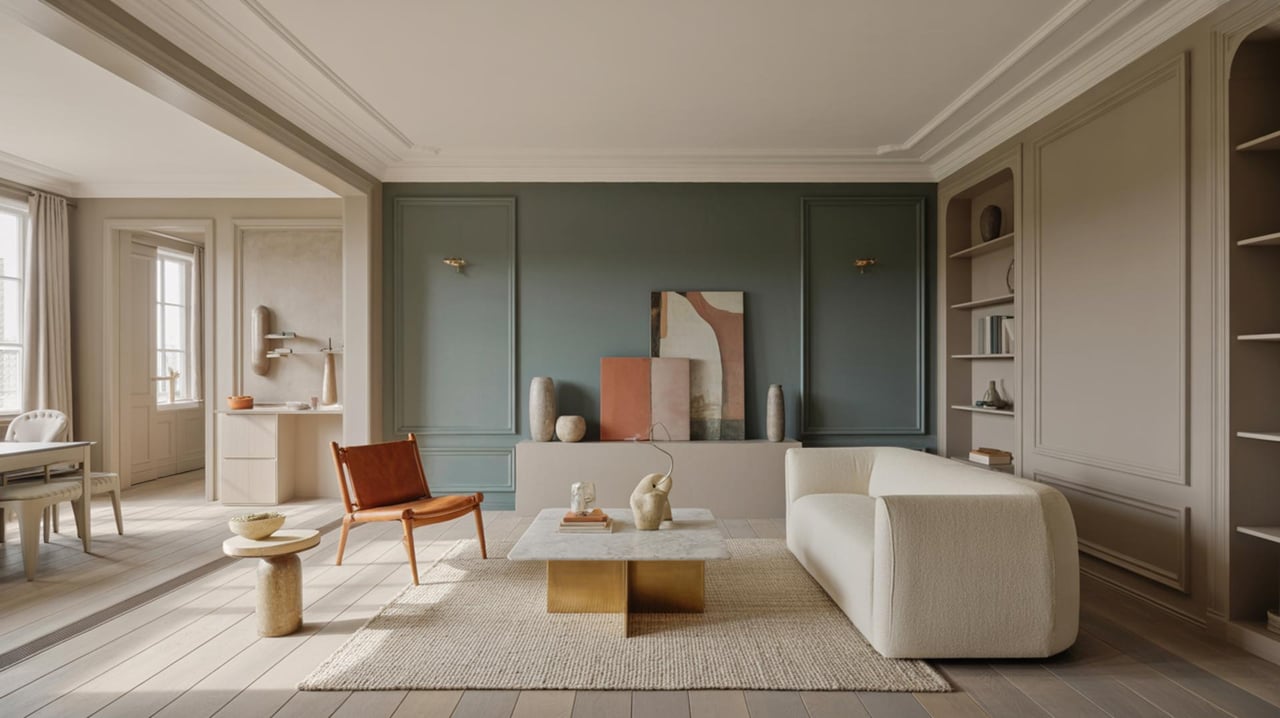Choosing the right paint colors for your home can transform your living space, creating an environment that reflects your personality and enhances the overall aesthetic. Achieving beautiful color harmony involves more than just picking your favorite hues; it requires a thoughtful approach to ensure that the colors complement each other and the space. Whether you're refreshing a single room or repainting your entire home, understanding the principles of color harmony can make the process more enjoyable and successful.
Understanding Color Theory
Color theory is the foundation of creating harmonious color schemes. It involves understanding the color wheel, which is divided into primary, secondary, and tertiary colors. Primary colors—red, blue, and yellow—are the building blocks of all other colors. Secondary colors, such as green, orange, and purple, are created by mixing primary colors. Tertiary colors are combinations of primary and secondary colors. Familiarity with these basics allows you to create color schemes that are balanced and pleasing to the eye. Complementary colors, which are opposite each other on the color wheel, can create dynamic contrast, while analogous colors, which are next to each other, offer a more subtle and cohesive look.
Choosing a Color Palette
Selecting a color palette is a crucial step in achieving color harmony. Start by identifying the mood you want to create in your space. Warm colors like reds and yellows can evoke feelings of energy and warmth, while cool colors like blues and greens often create a calming and serene atmosphere. Consider the function of the room and how you want to feel when you're in it. Once you've determined the mood, choose a primary color and two or three complementary or analogous colors to complete your palette. This approach ensures that the colors work together seamlessly, creating a cohesive look throughout the space.
Considering Natural Light
Natural light plays a significant role in how paint colors appear in a space. The amount and direction of natural light can alter the perception of color, making it appear lighter, darker, or even changing its hue. Rooms with ample natural light can handle darker or more saturated colors, while spaces with limited light may benefit from lighter, more reflective shades. It's important to test paint samples in different lighting conditions to see how they look at various times of the day. This step helps prevent surprises and ensures that the colors you choose will look as expected once applied.
Testing Paint Samples
Before committing to a color, it's essential to test paint samples on your walls. Paint small sections in different areas of the room to see how the color interacts with the light and other elements in the space. Observe the samples at different times of the day to understand how the color changes. This process allows you to make adjustments before purchasing large quantities of paint. Testing samples also helps you avoid costly mistakes and ensures that the final result aligns with your vision.
Coordinating with Existing Elements
When selecting paint colors, consider the existing elements in your space, such as furniture, flooring, and fixtures. These elements can influence the overall color scheme and should be taken into account to ensure a harmonious look. Choose colors that complement or contrast with these elements in a way that enhances the overall design. For example, if you have a bold piece of artwork, you might choose a more neutral wall color to let the artwork stand out. Alternatively, if your furniture is neutral, you might opt for a bolder wall color to add interest and depth to the room.
Creating Focal Points
Using paint to create focal points can add interest and dimension to a room. Accent walls, for example, are a popular way to introduce a bold color without overwhelming the space. Choose a wall that naturally draws attention, such as the one behind a bed or a fireplace, and paint it in a contrasting or complementary color to the rest of the room. This technique highlights architectural features and adds visual interest. Focal points can also be created through the use of patterns or textures, such as stripes or stencils, to add a unique touch to your space.
Balancing Bold and Neutral Colors
Achieving color harmony often involves balancing bold and neutral colors. Bold colors can add energy and personality to a space, but too much can be overwhelming. Neutral colors, on the other hand, provide a calming backdrop and allow other elements to shine. A balanced approach involves using bold colors as accents, such as on an accent wall or in accessories, while keeping the main color scheme neutral. This strategy ensures that the space feels cohesive and inviting, without being overpowering.
Considering the Flow Between Rooms
When painting multiple rooms, it's important to consider the flow between spaces. Colors should transition smoothly from one room to the next to create a sense of continuity throughout the home. This doesn't mean every room needs to be the same color, but rather that the colors should complement each other. Using a consistent color palette with variations in shade or intensity can achieve this effect. This approach helps create a unified look that enhances the overall design of your home.
Incorporating Trends Thoughtfully
While it's tempting to follow the latest color trends, it's important to incorporate them thoughtfully. Trends can provide inspiration, but they should be adapted to suit your personal style and the unique characteristics of your space. Consider using trendy colors as accents or in easily changeable elements, such as accessories or a single wall, rather than committing to a full room. This allows you to update your space without a complete overhaul when trends change. Ultimately, the goal is to create a timeless look that reflects your personality and enhances your home.
Seeking Professional Advice
If you're unsure about your color choices or need guidance, seeking professional advice can be beneficial. Interior designers and color consultants have the expertise to help you select colors that work well together and suit your space. They can provide valuable insights into color theory, lighting, and design principles, ensuring that your final color scheme is both beautiful and functional. A professional can also offer suggestions you may not have considered, helping you achieve the perfect balance of color harmony in your home.
Discover Your Perfect Color Palette
Choosing the right paint colors can transform your home into a harmonious haven. With expert strategies, you can create a space that reflects your personality and style. Whether you're refreshing a single room or your entire home, the right colors make all the difference. For personalized advice and more tips on achieving beautiful color harmony, contact Jeffrey A. Valcik and Associates, Inc. today.




